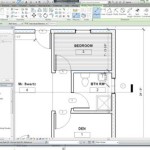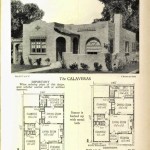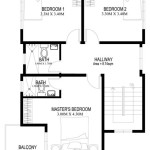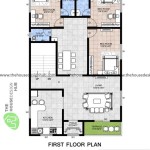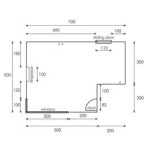```html
2 Bedroom Tiny House Plans With Garage: Maximizing Space and Functionality
The concept of tiny house living has gained significant traction as individuals seek to simplify their lives, reduce their environmental impact, and achieve financial freedom. While tiny houses are often associated with minimalist living and compact spaces, the integration of a garage can significantly enhance their practicality and appeal, especially for those who require storage, workspace, or vehicle protection. Two-bedroom tiny house plans with a garage represent a thoughtful balance between efficient living and functional needs. These plans require careful consideration of space utilization, layout design, and structural integrity to ensure a comfortable and sustainable living environment.
Designing a two-bedroom tiny house with a garage presents unique challenges. The limited footprint necessitates innovative solutions to maximize every square inch. Architects and designers often employ strategies such as vertical building, multi-functional spaces, and clever storage solutions to achieve a harmonious balance between living space and garage functionality. Careful planning and adherence to building codes are essential to ensure the safety and structural integrity of the dwelling.
Key Considerations in Designing 2-Bedroom Tiny House Plans With a Garage
Several critical factors must be considered when developing two-bedroom tiny house plans with a garage. These factors directly impact the functionality, comfort, and overall viability of the design. Addressing these considerations effectively is crucial for creating a successful and livable tiny house.
Space Optimization: Given the limited square footage, optimizing the available space is paramount. This involves meticulously planning the layout to ensure efficient flow and utilization of every area. Multi-functional furniture, such as sofa beds, storage beds, and fold-away tables, are essential for maximizing space. Vertical storage solutions, including shelving units and wall-mounted organizers, can further enhance space efficiency. In the garage area, consider utilizing vertical storage systems and overhead racks to maximize usable space for parking and storage.
Layout and Floor Plan: The layout of a two-bedroom tiny house with a garage should prioritize functionality and comfort. A well-designed floor plan will separate living areas from sleeping areas and provide adequate space for cooking, dining, and relaxation. The bedrooms should be designed to maximize privacy and offer sufficient storage space. The garage should be easily accessible from the living area and designed to accommodate the intended vehicle and storage needs. Consider incorporating features such as a mudroom or entry area to prevent dirt and debris from being tracked into the living area. The placement of windows and doors should be carefully considered to maximize natural light and ventilation.
Structural Integrity: Ensuring the structural integrity of a tiny house with a garage is crucial, particularly given its mobile nature (if designed to be mobile). The foundation, framing, and roofing systems must be designed to withstand the stresses of transportation and the elements. Building materials should be chosen for their durability, weight, and resistance to moisture and pests. It is essential to adhere to all applicable building codes and regulations to ensure the safety and longevity of the structure. Consult with a qualified structural engineer to ensure the design is sound and meets all necessary requirements. The garage door should be appropriately sized and reinforced to withstand wind loads and potential impacts.
Garage Integration Techniques
Integrating a garage into a tiny house design requires careful planning and innovative solutions. There are several approaches to achieve this integration, each with its own advantages and disadvantages.
Attached Garage: An attached garage is the most common approach, where the garage is physically connected to the tiny house structure. This allows for direct access between the living area and the garage, which is particularly convenient during inclement weather. The design should ensure proper insulation and ventilation to prevent fumes and noise from the garage from affecting the living area. The attached garage can be incorporated into the overall aesthetic design of the tiny house, creating a cohesive and visually appealing structure.
Integrated Garage: An integrated garage is a more advanced design concept where the garage is seamlessly incorporated into the tiny house's overall structure. This may involve utilizing the garage roof as a living space or creating a multi-functional space that can serve as both a garage and a workshop. Integrating the garage requires careful planning and structural engineering to ensure the stability and safety of the design. This approach can maximize space utilization and create a unique and aesthetically pleasing tiny house design.
Detached Garage: A detached garage is a separate structure located near the tiny house. This approach provides more flexibility in terms of design and placement. A detached garage can be built with similar architectural style and materials as the tiny house to maintain a cohesive aesthetic. This option may be suitable when space allows for two separate structures on the property. A detached garage also minimizes the potential for noise and fumes to enter the living area.
Design Elements to Consider
Beyond the core structural and spatial considerations, specific design elements play a crucial role in the overall functionality and appeal of a two-bedroom tiny house with a garage.
Natural Light and Ventilation: Maximizing natural light and ventilation is essential for creating a comfortable and healthy living environment. Large windows and skylights can bring ample natural light into the living area, reducing the need for artificial lighting. Proper ventilation can help prevent moisture buildup and improve air quality. Windows and vents should be strategically placed to promote cross-ventilation and ensure fresh air circulation. In the garage, consider installing adequate ventilation to remove fumes and prevent the buildup of moisture.
Storage Solutions: Clever storage solutions are crucial for maximizing space in a tiny house. Built-in cabinetry, shelving units, and under-bed storage can help organize belongings and keep the living area clutter-free. Utilize vertical space by installing shelves and racks on walls. Consider incorporating hidden storage compartments in furniture and other areas of the house. In the garage, utilize vertical storage systems, overhead racks, and wall-mounted organizers to maximize usable space for parking and storage equipment, tools, and other items.
Multi-Functional Spaces: Designing multi-functional spaces is a key strategy for maximizing space utilization in a tiny house. A living room that can also serve as a guest bedroom with the use of a sofa bed, or a dining area that can be converted into a workspace, can significantly enhance the functionality of the space. The garage could potentially be designed with a foldable workbench or a wall-mounted tool organizer that allows it to transform into a workshop when needed. Careful planning and thoughtful design can transform a single space into multiple usable areas.
Aesthetics and Design Style: The aesthetic design of a tiny house should reflect the homeowner's personal style and preferences. Choose a design style that complements the surrounding environment and creates a cohesive and visually appealing overall appearance. Consider the use of colors, textures, and materials to create a warm and inviting atmosphere. The design should integrate seamlessly with the garage to maintain a consistent architectural theme.
Accessibility: Consider accessibility needs when designing a two-bedroom tiny house with a garage. Incorporating ramps or elevators can improve accessibility for individuals with mobility limitations. Ensure that doorways and hallways are wide enough to accommodate wheelchairs or walkers. In the garage, provide adequate space for maneuvering around vehicles and equipment. Designing with accessibility in mind can make the tiny house more inclusive and adaptable to different needs.
Energy Efficiency: Incorporating energy-efficient features can significantly reduce utility costs and minimize the environmental impact of a tiny house. Install energy-efficient windows and doors, use insulation with a high R-value, and consider incorporating solar panels or other renewable energy sources. Choose energy-efficient appliances and lighting fixtures. In the garage, consider installing an insulated garage door and using energy-efficient lighting. Designing for energy efficiency will not only save money but also contribute to a more sustainable lifestyle.
Designing a two-bedroom tiny house with a garage requires a careful balance of space optimization, functionality, and aesthetics. By considering the key factors and design elements outlined, it is possible to create a comfortable, sustainable, and functional living space that meets the unique needs of the homeowner.
```
2 Bedroom Tiny House Plans Blog Eplans Com

The Best 2 Bedroom Tiny House Plans Houseplans Blog Com

2 Bedroom Tiny House Plans Blog Eplans Com

The Best 2 Bedroom Tiny House Plans Houseplans Blog Com

2 Bedroom Tiny House Plans Blog Eplans Com

2 Bedroom Tiny House Floor Plan

Modern Tiny House Plans 2 Bedroom Bathroom With Free Oragnal Cad File Small Floor Pool

Floor Plan 2 Bedroom Tiny House Interior

12 New Tiny House Plans With 2 Bedrooms We Love Dfd

2 Story Modern Tiny Home With Open Garage 31207d Architectural Designs House Plans
Related Posts

